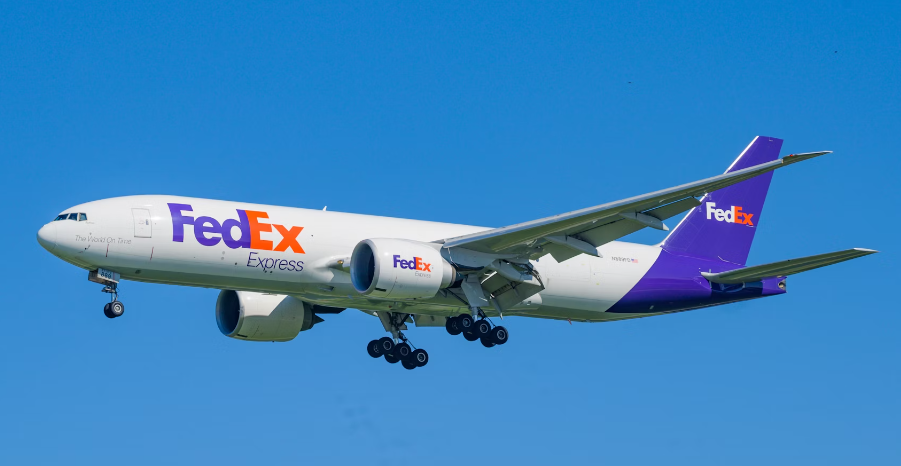Table of Contents
August 2025 Logistics Shake-Up: Rising Costs and Policy Shifts Cross-Border Sellers Can’t Ignore
Time: Aug 22,2025 Author: SFC Source: www.sendfromchina.com
August has rolled in with a wave of challenging updates for cross-border sellers. If you're shipping from China to the U.S., you may have noticed a sudden tightening of costs and customs rules right in the summer heat. From the controversial end of de minimis exemptions to revamped cube-based surcharges from FedEx and UPS, plus looming U.S. port fees on Chinese vessels, it feels like margin pressure went from mild to intense overnight.
1. De Minimis Exemption Suspended—No More Duty-Free Packages Under $800
What changed? On July 30, 2025, the White House signed an executive order eliminating the U.S. de minimis exemption—starting August 29, 2025, packages valued $800 or less (once duty-free) will now be taxed with "all applicable duties."For six months, those shipments going through international postal services will face either:
- A flat specific tariff—$80, $160 or $200, depending on country-of-origin tariff levels—or
- An ad valorem duty (percentage-based), depending on IEEPA-based tariff rates. After six months, duties will shift entirely to ad valorem.
Sellers using express carriers like FedEx and UPS will also lose exemption; all low-value parcels will be fully taxed.
Why it matters
The de minimis rule has been a linchpin of affordable e-commerce logistics—especially for platforms like Shein and Temu, which cleverly leveraged $800-or-less shipments to reach U.S. shoppers cheap and fast. Now, that friction-free advantage is gone.Moreover, postal services in Europe, such as PostNord and bpost, have already paused U.S.–bound parcel shipments—citing tight deadlines and unclear guidance under the new rules.
Takeaway for sellers
- Expect higher landed costs and longer clearance times.- Full customs compliance—including proper duty calculations and paperwork—is now mandatory even for low-value items.
- Many 3PLs are shifting to U.S.-based fulfillment to avoid customs complexity.
2. FedEx Hikes Import Processing and Dimensional Weight Rules (Effective August 18, 2025)

- Raise the import processing fee from US$1.50 per shipment to US$2.50—a 67% increase, across all inbound parcels.
- Tighten up dimensional weight measurements: instead of rounding down dimensions by half an inch, all fractional measurements (under 1 inch or 1 cm) will be rounded up. As a result, package volume—and cost—could increase by around 20% if dimensions fall into a high-cost bracket.
- Additional Handling Charge (AHC) applies to parcels over 8,640 in³ in cubic volume.
- Surcharge amounts vary by zone and type (commercial vs. residential), ranging from ~$205 to $305.
Who feels it most?
Large, bulky items—especially low-density packages—will face sudden surcharge upticks.Seller strategy hints
- Optimize packaging dimensions where possible.- Break large shipments into smaller boxes to avoid surcharges.
- Or consolidate smartly to keep cubic volume in check.
3. October Arrival: U.S. Port Fees on China-Owned/-Operated Vessels
Looking ahead to October 14, 2025, the U.S. will begin imposing port fees on Chinese shipping vessels—part of a phased policy announced earlier by USTR:- Phase 1: Starting October 14, ships owned or operated by Chinese entities, or built in China, will be assessed US$50 per net ton (or per container), increasing by US$30 annually until reaching US$140 per ton by 2028.
- Phase 2: In 2028, new restrictions will ban foreign vessels from transporting U.S. LNG exports unless the proportion of U.S.-built and -operated vessels reaches 15% within 10 years.
4. What Do Experts from SendFromChina Say
To navigate the evolving logistics landscape and maintain profitability, SendFromChina experts recommend optimizing packaging to minimize dimensional weight charges, consolidating shipments to take advantage of bulk shipping rates, implementing flat-rate shipping for predictable pricing, considering regional carriers for cost-effective short-distance deliveries, regularly reviewing shipping policies to stay updated with carrier rate changes, and outsourcing fulfillment to third-party logistics providers to reduce overhead costs and improve efficiency.5. Conclusion
In summation, August 2025 marks a pivotal moment for cross-border trade, as multiple key policy shifts—from the removal of the U.S. de minimis exemption to radical updates in FedEx and UPS surcharges and looming port fees on Chinese vessels—collectively reshape the cost and complexity of shipping.For cross-border sellers, the margin squeeze is undeniable. Yet, opportunity remains for those who act strategically. Whether it's tightening your packaging to avoid dimensional weight penalties, relocating inventory to U.S. hubs, embracing bonded warehousing, or leveraging custom-managed fulfillment systems—being nimble is your greatest asset.
6. FAQs
Q1: What exactly is the “de minimis exemption” and why does its suspension matter?
A: The de minimis exemption let international postal shipments valued at US$800 or less enter the U.S. without duties. Starting August 29, 2025, this exemption is suspended—meaning all low-value packages now face full duty, adding cost and customs complexity.Q2: Are FedEx import processing fees really rising to US$2.50?
A: Based on your report, yes—FedEx will increase the import processing fee to US$2.50 per parcel, and tighten dimensional rounding rules starting August 18.Q3: What’s the threshold for UPS’s Large Package Surcharge now?
A: Packages exceeding 17,280 cubic inches or 110 lbs will trigger LPS starting August 17, 2025.Q4: How will U.S. port fees affect shipping costs?
A: Starting October 14, vessels owned/operated by Chinese entities face port fees starting at US$50 per net ton, increasing annually—raising freight costs that ripple into your delivery pricing.Q5: What can 3PLs do to help mitigate these changes?
A: A strategic 3PL can optimize packaging, help you consolidate or split shipments, pre-position inventory in U.S. warehouses, ensure accurate customs classification, and negotiate smarter carrier contracts. Post Views:1850
Post Views:1850
Copyright statement: The copyright of this article belongs to the original author. Please indicate the source for reprinting.
Previous Post
In-Bond Shipment Explained: What It Is, How It Works & Why It Matters
Next Post
What Is an Inventory Management System? A Complete Guide for eCommerce & 3PL
TAGS
Hot Research
Recent News
Get a Custom China Fulfillment Solution with FREE Storage for 30 Days
 Want to know about our services, fees or receive a custom quote?
Want to know about our services, fees or receive a custom quote?
 Please fill out the form on the right and we will get back to you within a business day.
Please fill out the form on the right and we will get back to you within a business day.
 The more information you provide, the better our initial response
will be.
The more information you provide, the better our initial response
will be.





 TAGS:
TAGS: